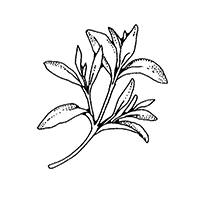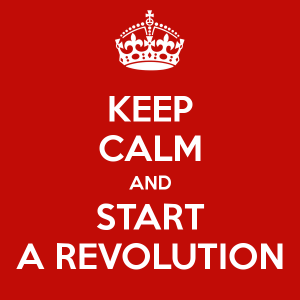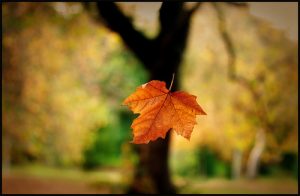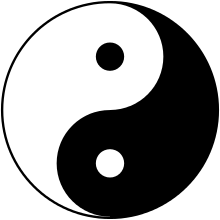 January can be a tough month. Many of us are dealing with debt or emotional overload from the holiday season; where I live it is cloudy and dull – usually snowy and cold, but this January gray and rainy; and we are in the midst of a transition of leadership. Whatever your politics, this has been a difficult and polarizing election and inauguration season in which it seems difficult for civility and clarity to be the rule.
January can be a tough month. Many of us are dealing with debt or emotional overload from the holiday season; where I live it is cloudy and dull – usually snowy and cold, but this January gray and rainy; and we are in the midst of a transition of leadership. Whatever your politics, this has been a difficult and polarizing election and inauguration season in which it seems difficult for civility and clarity to be the rule.
Often when we are troubled, we hang on to things, or we ruminate about the same thing over and over, or we seem to get all tangled and confused in a variety of thoughts and feelings. I’ve had several messages in the last two days about “letting go.” These messages struck me as brilliant sanity in the midst of the cloudiness of January. So here they are:
Message #1: Touch and Go – I’d had a difficult session with a client the other day, and I was struggling with feelings of self doubt, shame and anger. I remembered reading something several years ago in a great book for helpers by Karen Kissel Wegela, “How to Be a Help Instead of a Nuisance: Practical Approaches to Giving Support, Service & Encouragement to Others”. When I got home that night, I looked through the book and found a number of helpful ideas, but especially “touch and go”. She explains it much better than I can, so I highly recommend you checking out Karen Kissel Wegela’s Web page for more information. But here’s the short version: When a feeling or sensation arises within us, we can touch it completely – feel it, fully experience it, move toward it – and then, let it go. This allows us to learn what we are really feeling or experiencing without getting fixated on it or it having hold of us. She mentions the distinction of “touch and go” from both “go and go” (trying to ignore the feeling) and “touch and grab” (getting stuck in the feeling). I have been practicing touch and go the last two days. When the feelings about this session come back up, I touch them (for example, I “touched” long enough to do some journaling and to talk with a trusted colleague about my feelings and experiences in the session and had some good personal insights about what was going on with me in the session) and then let them go. If they come back, I touch them briefly again and then let them go. “Letting go” for me generally means literally visualizing the feelings floating away or draining out of my body and focusing on what is happening in the present moment, or being mindful. Yesterday, this practice helped me have enough self compassion that I also experienced a strong sensation of compassion for my client and that client’s own experiences. I also shared “touch and go” with another client in a session, and together we came up with the visual image of a “touch and go” landing sometimes used in pilot training, where the pilot touches down briefly and then immediately goes back up in the air. This seemed useful to both of us in remembering the concept.
Message #2: A poem by e.e. cummings that appeared in my email inbox this morning:
let it go – the
smashed word broken
open vow or
the oath cracked length
wise – let it go it
was sworn to
go
let them go – the
truthful liars and
the false fair friends
and the both and
neithers – you must let them go they
were born
to go
let all go – the
big small middling
tall bigger really
the biggest and all
things – let all go
dear
so comes love
And then it struck me that perhaps love is the space where we let it all go and then all things become possible. May it be so this gray January Thursday! Be well.
*Update on my “New Year’s Revolutions” Blog: More days than not I have held to eating between the hours of 9 am – 7 pm. I have had a couple late night eating episodes, but perfection is not required here. Also, all but 2 days so far in January, I have done 10 minutes of sitting meditation. I am finding recently that the time goes very fast, and that I feel I’m FINALLY really meditating and focusing on my breath (rather than a bunch of thoughts) right before the timer goes off – a bit frustrating but where it is right now. And I have said “ouch” a few times, and have taught several clients about this strategy as well. So – a good start to my revolution.

 I’m borrowing the title from a year-old set of New Year’s Revolutions written by author
I’m borrowing the title from a year-old set of New Year’s Revolutions written by author  ose of us “of a certain age” remember Leo as a loving figure on public television who promoted humans over things, and always offered hugs to anyone in the audience who wanted one. His “Love 1A” non-credit, non-graded class began when one of his college students died from suicide, and he was trying to understand this loss.
ose of us “of a certain age” remember Leo as a loving figure on public television who promoted humans over things, and always offered hugs to anyone in the audience who wanted one. His “Love 1A” non-credit, non-graded class began when one of his college students died from suicide, and he was trying to understand this loss. 1. Darkness and Light – here are a couple ways to look at this issue in our lives: Where am I sinking down into the rich soil (darkness) to be still and germinate seeds of creativity as we move into winter, and where am I stretching up into the still warm sunlight of fall with bright growth? Another way of considering this is to literally look into how much I pay attention to things in my own shadow (as Jung would say) – in the unconscious or unaware parts of myself that are always in the darkness cast by the sunlight? The yin/yang symbol from Chinese philosophy – literally meaning “dark” and “bright” is something to ponder: where is light inside your darkness, and where is darkness inside your light? Do you allow yourself to accept both the darkness and the light currently in your life, without feeling life must be all one or all the other?
1. Darkness and Light – here are a couple ways to look at this issue in our lives: Where am I sinking down into the rich soil (darkness) to be still and germinate seeds of creativity as we move into winter, and where am I stretching up into the still warm sunlight of fall with bright growth? Another way of considering this is to literally look into how much I pay attention to things in my own shadow (as Jung would say) – in the unconscious or unaware parts of myself that are always in the darkness cast by the sunlight? The yin/yang symbol from Chinese philosophy – literally meaning “dark” and “bright” is something to ponder: where is light inside your darkness, and where is darkness inside your light? Do you allow yourself to accept both the darkness and the light currently in your life, without feeling life must be all one or all the other? 3. Death and Life – while we might literally look at being present with our own death, I’m thinking more of the constant cycle of endings and beginnings in any life. I have a 16-year-old cat who is in his dying process, and the other day I got so angry with him when he hid under the bed instead of coming out to take his pain medicine. Then I realized I was really sad under my disguise of anger, and having difficulty being present with the end of his life, and his own way of dealing with it. I recently ended one career and began focusing full-time on another. That process has not been neat and tidy, and I am still working on literal balance – sometimes I feel dizzy with the balance of these endings and beginnings. I have several clients working through the end of relationships and the beginning of a new life as a single person. Where are you in the cycles of your life? Fall is a time that invites us to pay attention to the falling of the leaves, the dying of our flowers, and the turning within, to a holding or hibernating time. Are you in tune with the death and life of this season?
3. Death and Life – while we might literally look at being present with our own death, I’m thinking more of the constant cycle of endings and beginnings in any life. I have a 16-year-old cat who is in his dying process, and the other day I got so angry with him when he hid under the bed instead of coming out to take his pain medicine. Then I realized I was really sad under my disguise of anger, and having difficulty being present with the end of his life, and his own way of dealing with it. I recently ended one career and began focusing full-time on another. That process has not been neat and tidy, and I am still working on literal balance – sometimes I feel dizzy with the balance of these endings and beginnings. I have several clients working through the end of relationships and the beginning of a new life as a single person. Where are you in the cycles of your life? Fall is a time that invites us to pay attention to the falling of the leaves, the dying of our flowers, and the turning within, to a holding or hibernating time. Are you in tune with the death and life of this season?